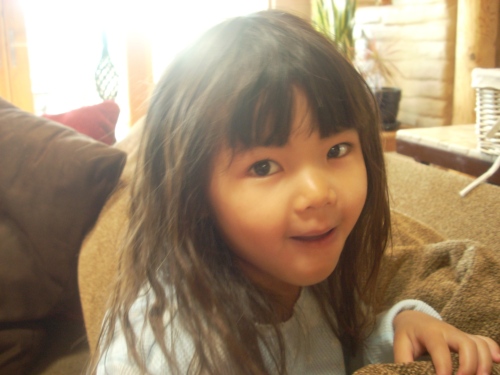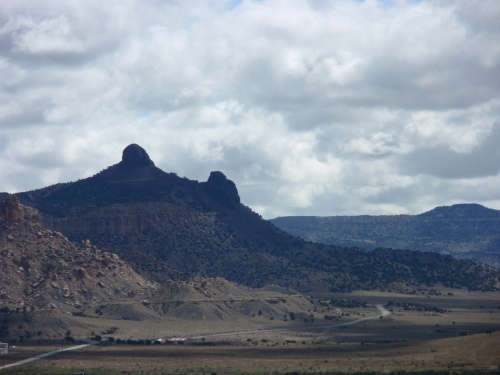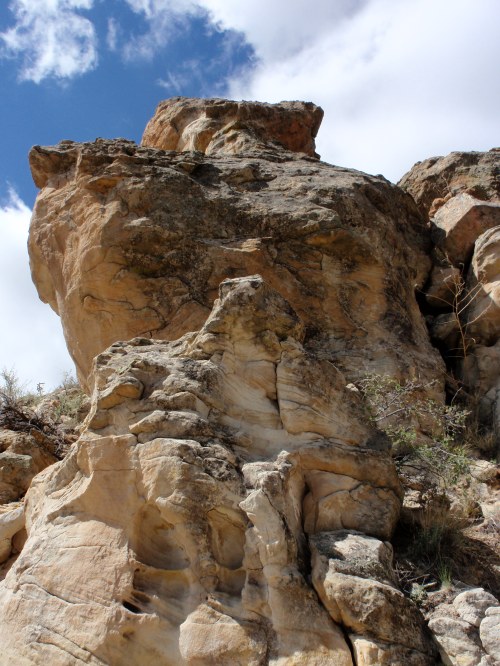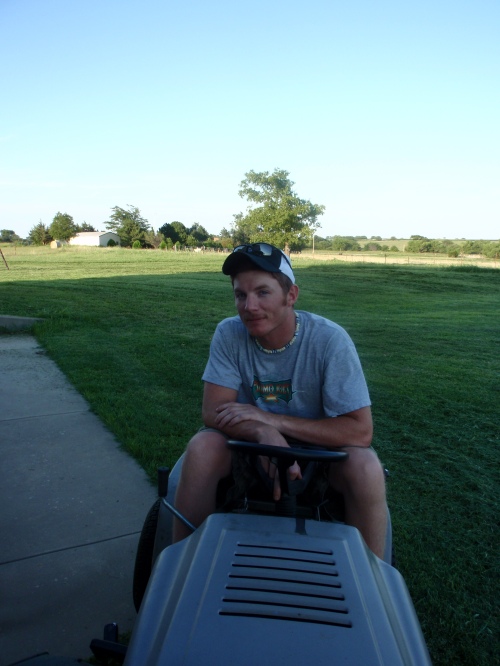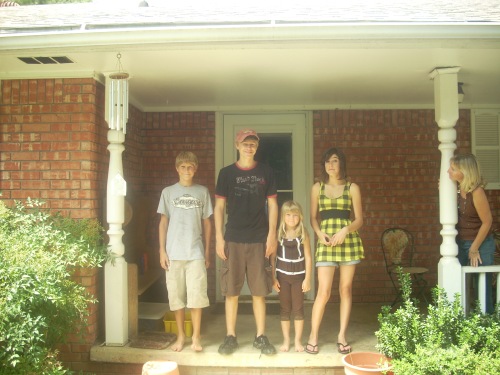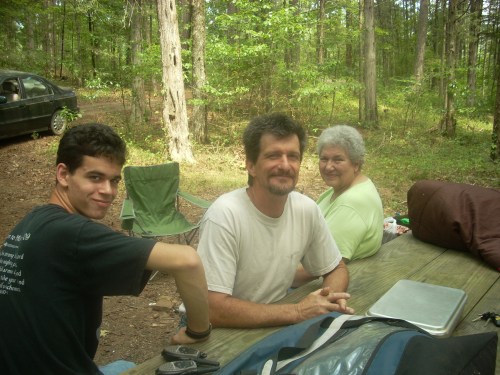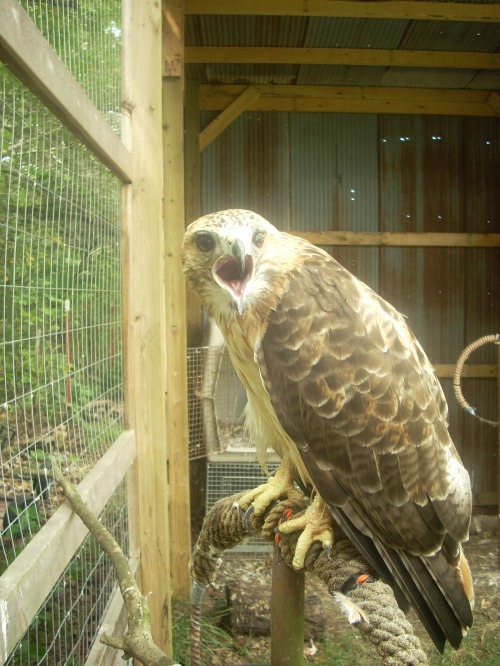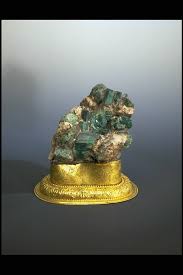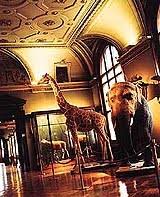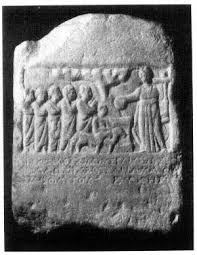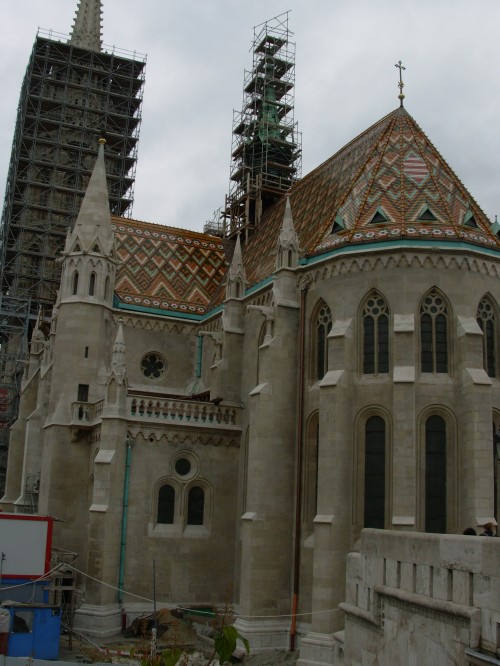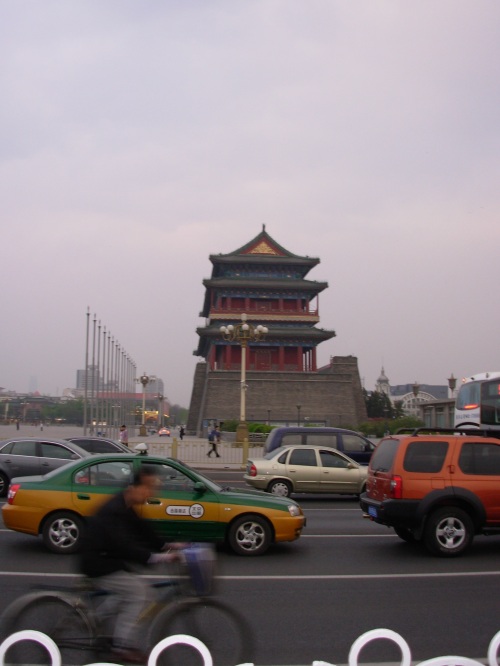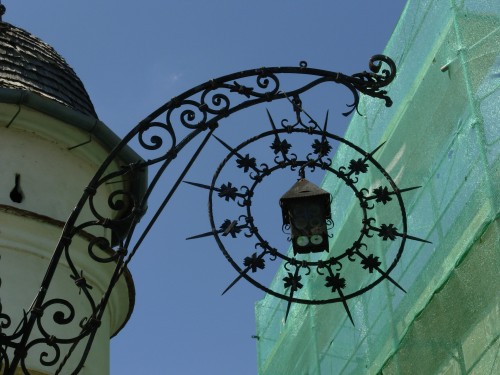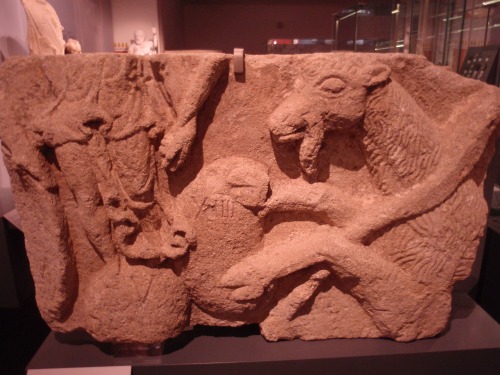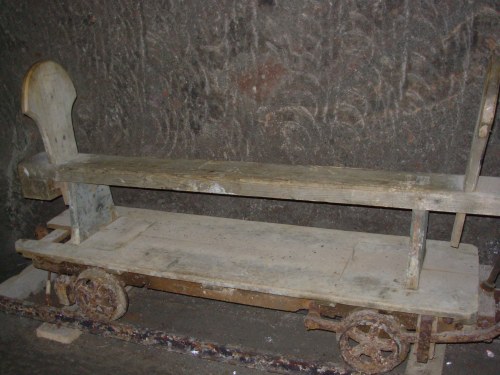The months of April , May and June of 2009 were quite busy in terms of my travel schedule. I was in China, Mongolia, South Korea, Kyrgz Republic (2x) (can I buy a vowel?), Tajikistan and Uzbekistan ( Tashkent is the Uzbek capital and my point of departure back to Europe…hence the name of the post). Subsequently I was in Kazakhstan and Canada…but that is another story (perhaps another blog entry). The plan was to travel to nations with aspirations of developing their uranium resources and to nations with uranium legacy sites which need remediation to advise, and support as appropriate. China and Korea were interim stops to the Central Asian countries. The flight schedules worked out that I ended up with a little down time in these two countries and decided to see what I could in a limited timeframe. My travelling companions were three German gentlemen ,Lutz, Uwe and Falk. We had 2 Kyrgzy national once we got to central asia, a driver named Rakhim and a translator named Dinara.
According to Wikipedia the history of Beijing (used to be called Peking) can be traced back 3000 years when it was the capital of the ancient state of Yan. It has been the capital of several major dynasties of China. It is the largest country in East Asia and the most populated in the world with over 1.3 billion people, approximately one-fifth of the world’s population. It seemed to me I saw most of them in Tiananmen Square (gate of heavenly peace) which I was able to visit late one afternoon prior to my next flight early the next morning. The population of Beijing is estimated to be 17.4 million people. The following is a few photos before and after nightfall in Tianamen Square.

Monument to People's Heroes

Me
Mongolia
My next stop was Mongolia. I flew into Ulaan Baataar the capitol (38% of total population) and then transferred to 4wd for a jaunt across the steppes to the northeast to visit some uranium exploration and former mining sites. At 1,564,116 square kilometres, Mongolia is the nineteenth largest and most sparsely populated independent country in the world, with a population of around 2.9 million people. Quite a change from China! Its about a 2.5 hour flight right over the Gobi Desert from Beijing to Ulaan Bataar.
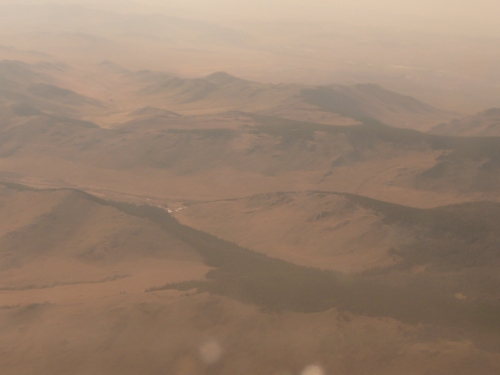
The Gobi from the Plane
The Gobi desert, one of the world’s great deserts, covers much of the southern part of Mongolia. Unlike the Sahara there are few sand dunes in the Gobi. There are large barren expenses of gravel plains and rocky outcrops.

Another View of the Gobi
Precipitation averages less than 100 mm per year, while some areas only get rain once every two or three years. Strong winds up to 140 km/h make travel dangerous in spring and fall. Temperatures reach +40° C. in summer, and -40 in winter.
Ulaan Baatar (UB) has a long and mysterious history, and is only now undergoing an industrial revolution. UB is one of the most drab looking cities on the face of the planet, a shame really, considering it’s the capital of one the most beautiful and hospitable countries on earth

View from the Hotel
The Mongolian people which I met were very kind and gracious. They were anxious to educate us about their culture and the history of their people in the brief time we were with them.

Sightseeing with our Mongolian Hosts
Approximately 50% of Mongolia’s population follow Buddhism, 40% are listed as having no religion, 6% are Shamanist and Christian and 4% are Muslim.
The currency unit of Mongolia is named the Tugrik . One American dollar is roughly equivalent to anything from 1200 to 1500 tugrik .

Lutz and Uwe doing a little souvenir shopping
The Mongolian steppes are amazingly vast. We travelled thru them in a two vehicle convoy some 600 kilometers to the region of the uranium deposits in the northeat part of the country. A steppe is a region characterized by a grassland plain without trees (apart from those near rivers and lakes). The prairie (especially the shortgrass, think east of Albuquerque all the way to McLean, Tx.) can be considered a steppe. It may be semi-desert, or covered with grass or shrubs or both, depending on the season and latitude. The term is also used to denote the climate encountered in regions too dry to support a forest, but not dry enough to be a desert.

The Steppes

More Steppes
Mongolia is a nation of herders. There are more horses than people here, and about five times as many sheep and goats. There are no fences, walls or hedges. The Mongolian horse dates back about 6000 years. This horse, known in Mongolia as the takhi, was discovered in 1881 by a Russian explorer named Przewalski, after whom the horse became known.

More Horses
By the end of the 1960s the horse had become extinct in the wild, but thanks to breeding reserves in Europe it was reintroduced to Mongolia in 1992.
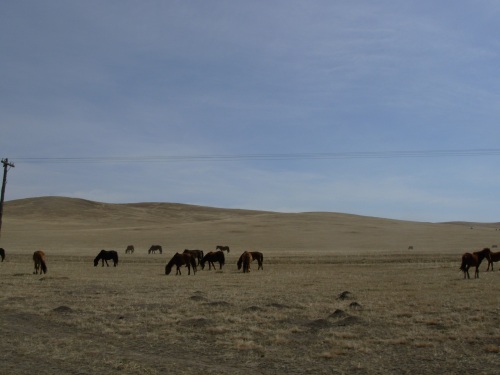
Mongolian Horses
Herds roam across the grasslands, horses galloping freely. Mares are generally not ridden in Mongolia. Instead they are used for breeding and producing Mongolia’s national beverage airag, which is fermented mare’s milk and has a mildly alcoholic content…..and tastes like it sounds!

Herdsmen
Mongolian gazelles are active during the daylight hours of fall and winter, mostly grazing in the mornings and late afternoons. They will excavate a depression bed within bushes in order to shelter themselves from winds and harsh weather. Being very fast animals, they are able to run up to 40 mph (65 kph), sustain this speed for 7–9 mi (12–15 km), and can leap up to 6.6 ft (2 m) into the air. They also are good swimmers, and can easily cross wide rivers. Large-scale migrations are regularly taken by this species. Herds of 6,000–8,000 animals of both sexes gather in the spring where they begin their northerly migrations for food and to drop young, often covering 120–180 mi (200–300 km) in a day. When reaching summer pastures in June, the sexes will isolate themselves and females prepare to give birth. Herds generally use several hundred square miles (kilometers) as their summer home range, regularly shifting areas in the search for food. During the winter, herds normally number no more than 120 animals. Sometimes single-sex herds of 20–30 animals will gather

Mongolian Gazelle ... look like antelope to me!
Probably Mongolias most famous citizen, Genghis Khan came to power by uniting many of the nomadic tribes of northeast Asia. After founding the Mongol Empire and being proclaimed “Genghis Khan”, he started the Mongol invasions and raids . During his life, the Mongol Empire eventually occupied a substantial portion of Central Asia
Born with nothing, he rose to become the most powerful man of his time, conquering nations to build the largest empire the world had ever seen.

Genghis Khan
Before Genghis Khan died, he assigned Ogedei Khan as his successor and split his empire into khanates among his sons and grandsons. He died in 1227 after defeating the Tanguts. He was buried in an unmarked grave somewhere in Mongolia at a location unknown.

Genghis Khan (1162-1227)
His descendants went on to stretch the Mongol Empire across most of Eurasia by conquering and/or creating vassal states out of all of modern-day China,Korea the Central Asian countries, and substantial portions of modern Eastern Europe and the Middle East.
Nearly all herders live in white gers (felt-lined tents, yurt in Russian), a characteristic sight throughout Mongolia. Each family has their own ger.

Inside the Ger (yurt)
A ger is a herder’s most important possession. When a couple gets married the family builds or buys them a new ger. This family has bought the lattice work, but they make the felt covering themselves.

The Structure
Gers are easy to put up. The lattice work forms the wall, and supports the long roof poles, which come together at the central ring. The door always points to the south.

Our Ger (yurt)
It even had wireless internet!!!!!

Dear John...you won't believe this....

The Ger C-5 Team
These Gers are in a uranium exploration camp called Gurvanbulag. The place had everything, central bathhouse, cafeteria, internet…very decent accomodations. At the time it was owned by a Canadian company…they are awaiting approval of some regulatory documents and plan to produce thru in-situ leach and some conventional underground mining.

Headworks
The shaft is flooded and will have to be pumped out. These ponds willact a settlement basins.

Lined Ponds
Some small waste piles exist at the site

Waste Piles
After visiting this site we then travelled to Dornod via the nearly ghost town of Mardai approximately 30 km away.
As we approach Dornod you can see the open cut where the uranium ore was excavated . The pit is flooded.

Uranium Mine Site
The site was operated by Khan which was a joint Mongolian Govt/Canadian/Russian venture (as can be seen by the flags)…the Canadians are no longer partners.

Group Photo Uranium Mine site-NE Mongolia
A quick 140 km over two track roads and we are at the Choilbalsan airport where we depart for Ulaan Baatar. After some discussions with hosts we departed for Korea.
Seoul , Korea
The flight in over the Yellow Sea is beautiful to say the least.

View from the plane near Seoul
Korea has existed as a state or collection of states almost continuously for several millennia. Korea was formed from the unification in the 7th century from three predecessor states. Korea existed as a single independent country up until the 20th century. In 1905, following the Russo-Japanese War, Korea was a protectorate of Japan, and in 1910 it was annexed as a colony. Korea regained its independence following Japan’s surrender to the United States in 1945. After World War II, a Republic of Korea (ROK) was created in the southern half of the Korean Peninsula while a Communist-style government was installed in the north (the DPRK). During the Korean War (1950-53), US troops and UN forces fought alongside soldiers from the ROK to defend South Korea from DPRK attacks supported by China and the Soviet Union. An armistice was signed in 1953, splitting the peninsula along a demilitarized zone at about the 38th parallel. Thereafter, South Korea achieved rapid economic growth. The north hasn’t fared so well.
Seoul is the capital and largest city of South Korea. With a population of over 10 million, it is one of the world’s largest cities. The metropolitan area has 24.5 million inhabitants, and is the world’s second largest. Almost half of South Korea’s population live in the Seoul National Capital Area, and nearly a quarter in Seoul itself, making it the country’s foremost economic, political, and cultural center.
Located on the Han River,i n the center of the Korean Peninsula, Seoul has been a major settlement for over 2,000 years, with its history dating back to 18 BC, when one of the three predessor kingdoms of Korea established its capital in what is now south-east Seoul. The city then became the capital of Korea during the Joseon and the Korean Empire. As the center of Korean history over the past millennia, the Seoul National Capital Area is home to four UNESCO World Heritage Sites: Changdeokgung, Hwasung Fortress, Jongmyo Shrine and the Royal Tombs of the Joseon Dynasty.
I was fortunate to see a bit of Seoul in our brief stopover (the weekend). We decided to go on a world cultural heritage tour of the city. The tour was fantastic! We visited Changdeokgung Palace, the Jongmyo Royal Shrine, the Ginseng Center (no photos top secret), Jo-Gye-Sa Buddist Temple, the Amethyst factory, the Suwon HwaSung Fortress, and the Namdaemun Market ! So lets take a look:

Our Guide
Changdeokgung Palace
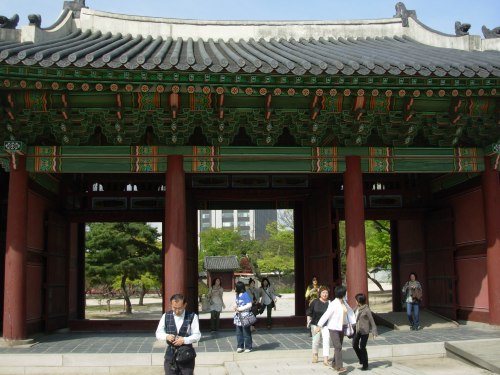
Palace Entrance

Injeongjeon-Throne Hall

Inside View of Throne Hall

Throne

Silver Furniture

Beautiful Architecture

Scenes from the Palace Grounds

Me

Azaleas

Almost a Postcard

Classic Structure

Rooftop

Nice Landscaping!

I like this place so much, I thought I would post it twice!

Serene

Me Again!A Kodak Moment

Quiet Beauty

Japanese Maples

Azaleas
Buddhist Temple

Nearing the Temple

Lanterns, Columns and Beams

Buddha

Shrine

Beautiful

Spectacular

Inside the Temple
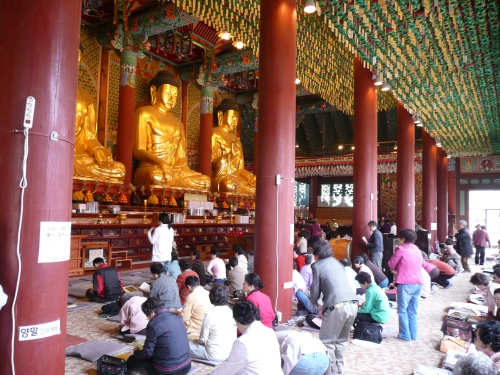
The Faithful
Jongmyo Royal Ancestral Shrine

Royal Ancestral Shrine

More Jongmyo

Jongmyo Joseon Dynasty 1392-1910
Hwasung Fortress

Wall of the Fort

Old and New

Again..old and new

No Shoes

The Fort

Showtime !

Royalty

Soldiers

Archers
The Namdaemun Market
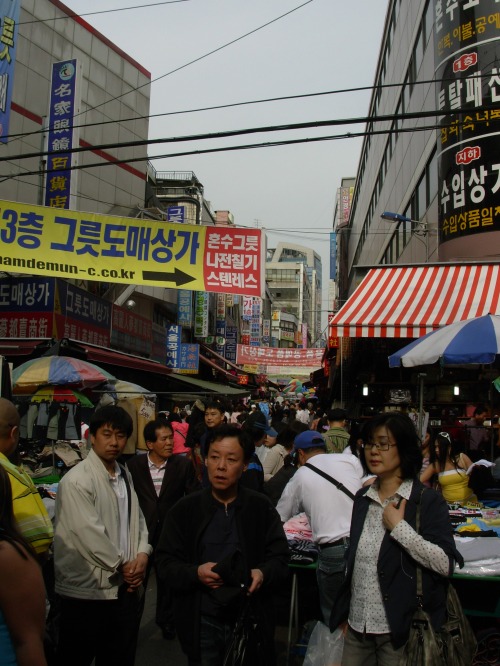
The Market

Fresh Produce

Nice Fish

Attention K-Mart Shoppers!

Our Hotel

Room with a View

Seoul at Night
Next Stop….Central Asia
I don’t know about most of you , but I could not have told you what countries are in Central Asia as of 18 months ago. I have learned a little since then but still have much more to learn. Check out the map below:
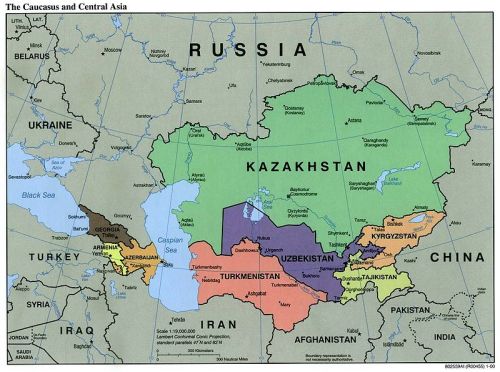
Central Asia is a facinating place with a long and rich history. I travelled from Seoul Korea to Bishkek Kyrgyzstan by air. Then transferred to 4wd and drove to several locations in the country, crossed into Tajikistan visited several uranium sites and ultimately ended up in Uzbekistan for the same purpose. (If you happen to be reading this blog and helped arrange this trip..I am in your debt!). The people were very kind and gracious ..and have endured much. I will always be grateful for this opportunity and will never forget these experiences.
Kyrgyzstan
The name of the country is a derivation of a word from the Turkic meaning forty tribes. Their epic hero Manas unified 40 tribes to repel an enemy invasion (the Khitans). This is reflected symbolically in their flag with the depiction of the 40 ray sun.

Bishkek is the capital and also the political, economic and cultural center of Kyrgyzstan. The city was a caravan station on the Silk Road thoughout its history has had several renamings. Today it has about 900,000 inhabitants.
As a caravan station on the silk Road it lie on a path which emerged from the Tian Shan mountain range, which separates it from China. In 1825 it was known as the Uzbek Khan of Kokand which was a state in the Ferghana valley, but it was taken in 1862 by Russian soldiers during the Russian conquest of Central Asia and destroyed. The Russians , founded a garrison and the population was increased by the influx of Russian peasants, anxious to farm the famous black soil. In 1878 a city with the name was Pischpek founded.
In 1926 she became the capital of the newly formed Kyrgyzstan, and simultaneously renamed Frunze after a close confidant of Lenin, who was born there and fought during the revolutions of 1905 and 1917, and in the Russian Civil War of the 1920s had a decisive role.
After the collapse of the Soviet Union, Kyrgyzstan became independent in 1991, when the Kyrgyz Republic, and the city regained its Kyrgyz name of Bishkek.

Tian Shan looming above Rooftops

Traditional young Women-Photo from poster
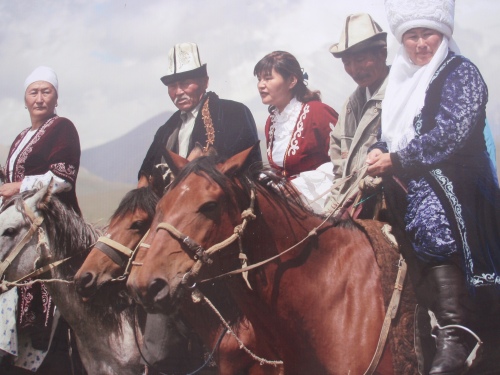
The People of Kyrgyzstan
The two preceeding photos above are from posters on display in the main square. I just liked them!

National Arts Theater

View from the Hotel

Park in Bishkek

Roadside Market-Traditional round Flatbread called Nan

Magnificient View

Kyrgyz Cattle Drive

Friendly Elderly Gentleman

Snowy Range

Fish and Furs

High Country

En Route to Minkush

Minkush-former uranium mining site

Welcome to Minkush !

City Hall Minkush

Our Translator- Dinara

Mountain Stream

Goat posing for Photo

Rock, Lichens, Graveyard, Mountains, River, Waste Dump

Small Village near Minkush

Villagers

Uranium Mill tailings dumps-Mailu Suu

Lenin

Lodging

Lenin

Nice Geology

Angle of Repose?

The Gas Station (actually diesel)

The Beautiful Naryn River

Lake formed by Dam on Naryn River

Wildflower

Poppies

School girl near Mailu Suu

Villager picking thru waste pile from light bulb factory harvesting tungsten filaments

Starbucks Kyrgyz style !
Having visited the uranium mining legacy sites of Minkush and Mailu Suu we headed for Tajikistan to gather information on Degmai and Taboshar which are also mining and milling waste sites left behind by the Russians. One final note about these Kyrgyz sites. They are located on steep mountain sides in areas that are seismically very active and prone to earthquakes and land/mud slides. They are located in the upstream drainage basin of the Syr-Darya river which flows in Tajikistan and Uzbekistan through a very populated agricultural area known as the Ferghana valley. These countries are very poor and have a modest infrastructure, let alone the resources for a large scale environmental remediation. In discussions with the regulatory authorities they make less than $50 usd per month. While the radiological hazard is more localized there may be transboundary toxic metal contamination. Much more work is needed in these areas in terms of risk reduction to human health and the environment.
Tajikistan
Tajikistan (pronounced /təˈdʒɪkɨstæn/ or /təˈdʒiːkɨstæn/; Тоҷикистон IPA: [tɔd͡ʒikɪsˈtɔn]), officially the Republic of Tajikistan (Tajik: Ҷумҳурии Тоҷикистон, Jumhurii Tojikiston), is a mountainous landlocked country in Central Asia. Afghanistan borders it to the south, Uzbekistan to the west, Kyrgyzstan to the north, and People’s Republic of China to the east. Tajikistan also lies adjacent to Pakistan but is separated by the narrow Wakhan Corridor.
Most of Tajikistan’s population belongs to the Tajik ethnic group, who share culture and history with Afghanistan and speak the Persian language (officially referred to as Tajiki in Tajikistan). Once part of the Samanid Empire, Tajikistan became a constituent republic of the Soviet Union in the 20th century, known as the Tajik Soviet socialist republic (Tajik SSR). Mountains cover over 90% of this Central Asian republic.
After independence, Tajikistan suffered from a devastating civil which lasted from 1992 to 1997. Since the end of the war, newly established political stability and foreign aid have allowed the country’s economy to grow. Trade in commodities such as cotton and aluminium wire has contributed greatly to this steady improvement. In Tajikistan about 20% of the population lives on less than US$1.25 per day.
On the way to Tajikistan we encountered a dust storm about the same time we had a flat. We stopped in a local village. While our driver Rakhim took care of the flat my associates and I located the nearest refreshment stand. This is where I made two new friends.

Dust Storm

My Friends!

Falk, Rakhim and me on the job!

Riding Double

Kyrgyz-Tajik Border

Our Hotel in Khujand

The Luxury Suite

A Feast

A Mosque

Another Mosque

The Market (Bazaar) in Khujand

Dried Fruits and Nuts

the Butcher Shop Boys

The Merchant

The Young Vendor

Tajik men passing the day
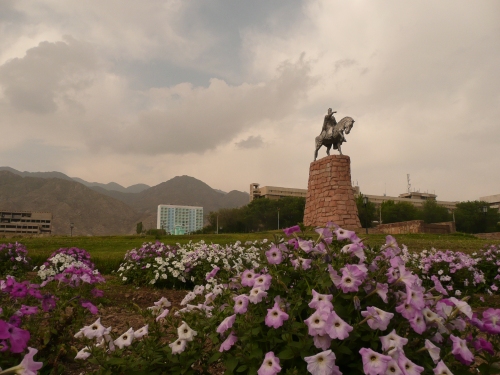
Somoni Founder of Tajikistan

Tajik Bride and Groom placing flowers at the Monument for Somoni

The Cops

At the Market
Now a few photos of the uranium legacy sites. These sites are uncontrolled as far as access. The process involves mining ore, crushing it, leaching the uranium out. It produces a tremendous volume of waste. Left to the elements it edrodes, gets used as building material, seeps into water supplies etc. I saw livestock grazing on these waste piles, evidence of children playing on them, people watering their gardens…it made my heart ache..its why I do this job..to try and make a difference.

"Yellow Hill" Taboshar
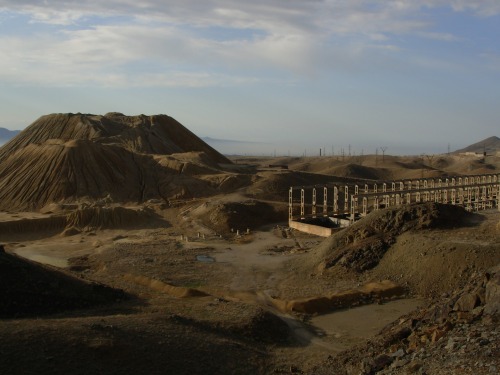
Acid Leach Tanks Taboshar

The Pit where the uranium ore was excavated
Uzbekistan
Uzbekistan, a country in Central Asia, formerly part of the Soviet Union. It shares borders with Kazakhstan to the west and to the north, Kyrgyzstan and Tajikistan to the east, and Afghanistan and Turkmenistan to the south.
Once part of the Persian Samanid and later Timurid empires, the region was conquered in the early 16th century by Uzbek nomads, who spoke at Eastern Turkic language. Most of Uzbekistan’s population today belong to the Uzbek ethnic group and speak the Uzbek, one of the family of Turkic languages.
Uzbekistan was incorporated into the Russian empire In the 19th century and in 1924 became a constituent republic of the Soviet Union. It has been an independent republic since December 1991.
Uzbekistan’s economy relies mainly on commodity production, including cotton,gold,uranium, potassium, and natural gas. Despite the declared objective of a transition to a market economy, Uzbekistan continues to maintain rigid economic controls, which often repel foreign investors. The policy of gradual, strictly controlled transition has nevertheless produced beneficial results in the form of economic recovery after 1995. Uzbekistan’s domestic policies on human rights and individual freedoms are often criticised by international organizations.[ In Uzbekistan about 45% of the population live on less than U.S. $ 1.25 per day.
I hope you enjoyed this blog and it gives you a little glimpse into some far away places. I would have uploaded some more on Uzbekistan but the batteries I bought for my camera were dead right out of the package! If you ever have a chance to visit these places I strongly recommend it.
And the final photo….

Some well deserved rest!











